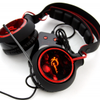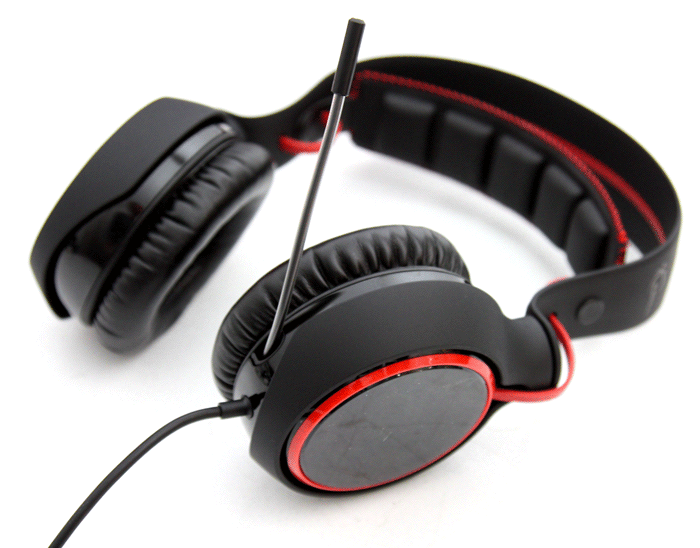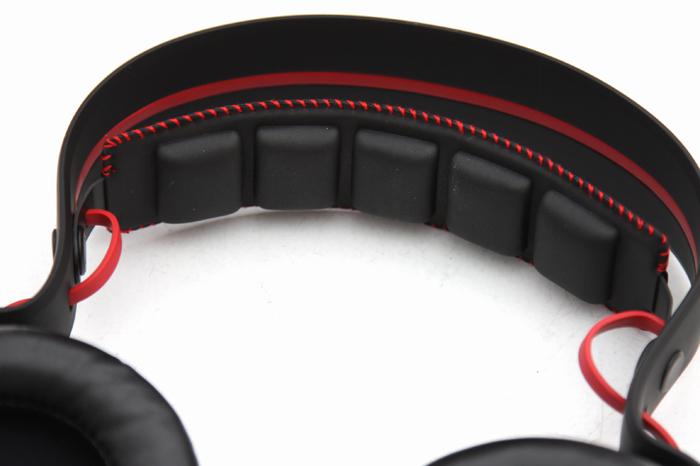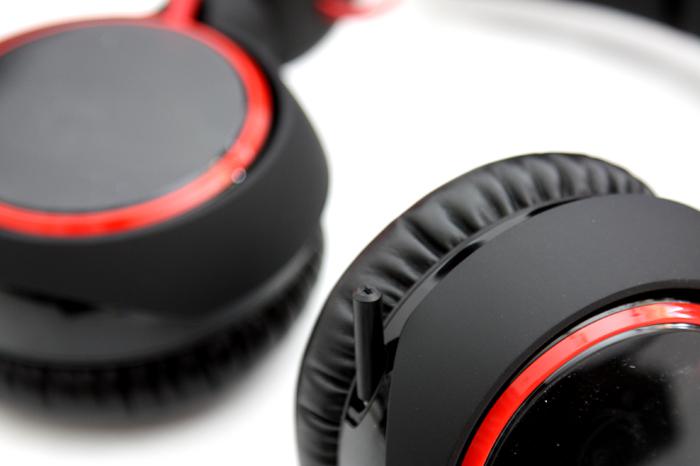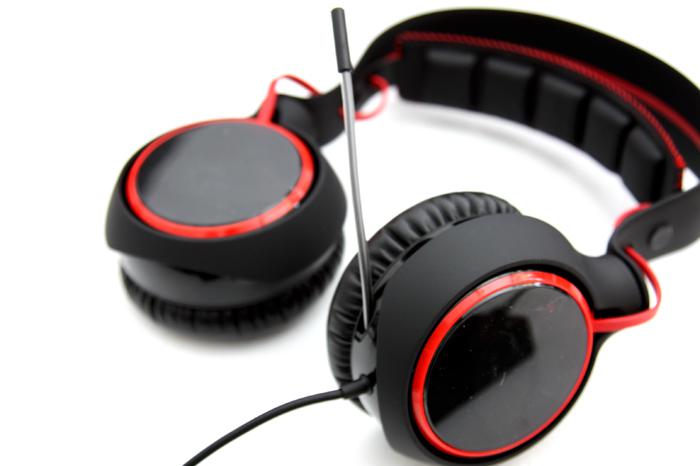Showcase
The headset comes with ten neodymium drivers which deliver a of volume with limited distortion in bass, the biggest one being 40mm for the bass/sub effects. In comparison, a Sennheiser HD800 has 56mm drivers and a 40mm voice coil (because the technology is rather different, it's hard to call Sennheiser drivers, 'drivers') though. The ear-cups on the headset are big and padded with quite a bit of adjustment for comfort. Overall very comfortable thanks to the leather like microfiber-wrapped memory foam we discussed earlier. Oh and they'll keep your ears nice and warm during those cold winters.
The headband is fairly similar alongside many standard designs, yeah that would be big and padded, but with little extra touches like the red stitching. Differences can be found in the design of the headband, whose hinges/swivel points have been redesigned to be much more hard-wearing. The ear cups can be rotated 180 degrees so they'll adjust themselves perfectly to the shape of your head unless your have ears shaped like an ogre.
The microphone is retractable, up and down. It is also adjustable as you can shape/bend it positioned close to your mouth. It is noise-cancelling surround sounds in the environment once activated in the software, a dual microphone setup clearly distinguishes between noise and voice and reduces background noise up to 40dB for a more clear voice.
G.Skill is using quality USB chips in their headsets, (we think a C-Media CM6302). If it is the IC used then that is a great audio chip that offers 16-bit, in 44.1 KHz or 48 KHz sample rates, DAC for output, and 16-bit, 44.1 KHz and 48 KHz ADC (analog-to-digital conversion) for the microphone. G.Skill did not license any (expensive) Dolby certifications though. You can pull out the MIC and bend it towards whatever direction you want it to point.
